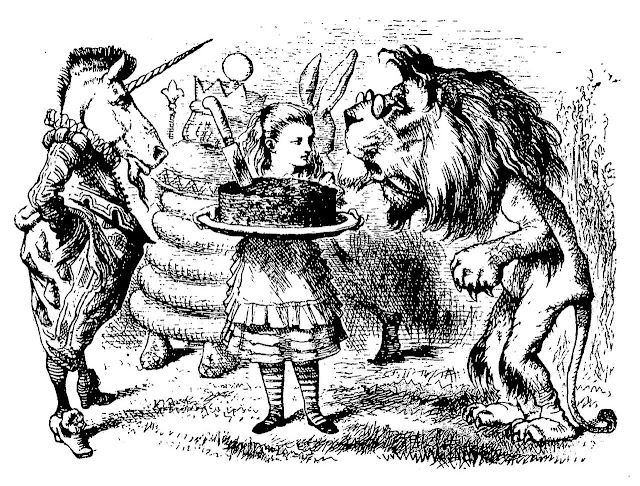The Lion And The Unicorn
The lion and the unicorn
Were fighting for the crown
The lion beat the unicorn
All around the town.
Some gave them white bread,
And some gave them brown;
Some gave them plum cake
and drummed them out of town.
Illustration by Sir John Tenniel, Alice's Adventure In Wonderland, Lewis Carroll. 1865.
Disraeli on the left, Gladstone on the right.
And some gave them brown;
Some gave them plum cake
and drummed them out of town.
Illustration by Sir John Tenniel, Alice's Adventure In Wonderland, Lewis Carroll. 1865.
Disraeli on the left, Gladstone on the right.
The unicorn and its compliment have regularly been used in heraldic
emblems, or symbolic representations of nations, families, and important
ranks, since the 16th century. In 1603, James VI, King of Scotland,
united the crowns of Scotland and England when he acceded to the English
throne as James I, the anointed successor to Elizabeth I. This joining
of the crowns of two sovereign states required a new Royal coat of arms.
The lion, standing for England, and a unicorn, for Scotland, serve as
supporters, or figures posed to buttress the central shield of the
emblem. King James I endorsed the use of this beastly imagery as it
represented the harmonious and powerful union that results from two
opposites — the two formerly warring nations.
Brown University Library.





Comments
Post a Comment